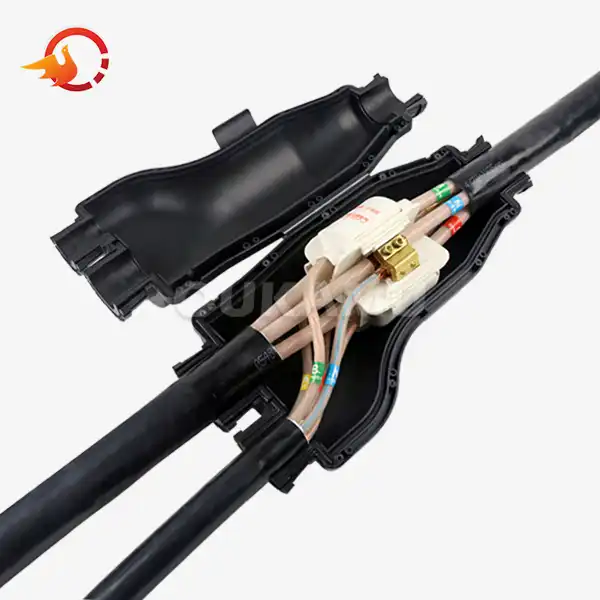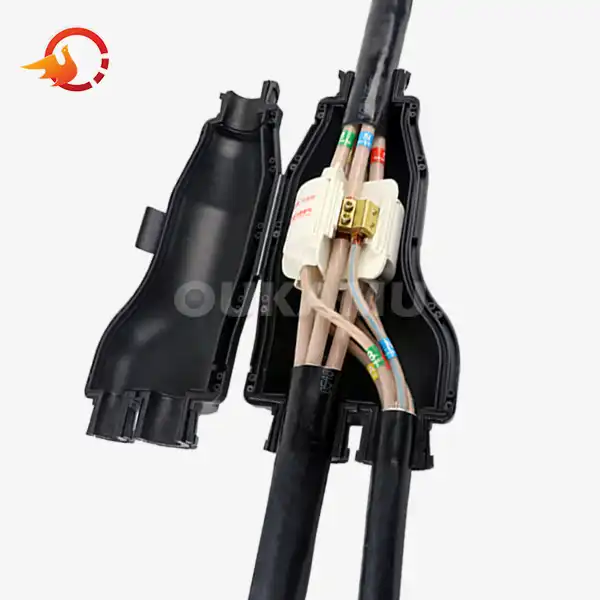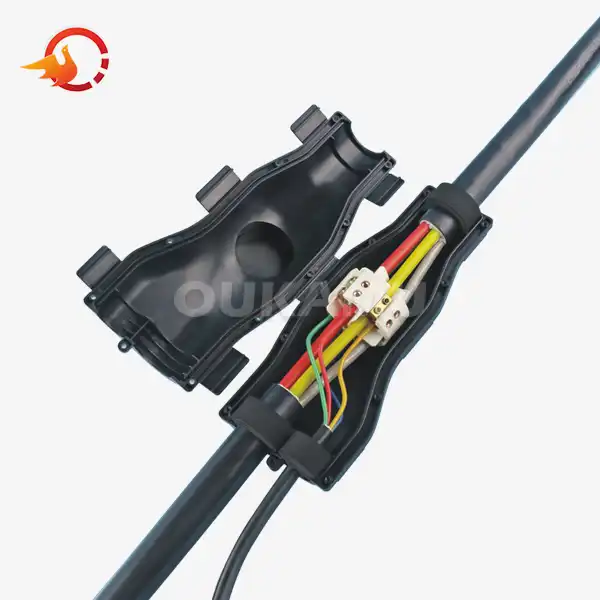Electrical Jointing Tips for Long-Lasting Performance
 2025-11-14 15:32:59
View:389
2025-11-14 15:32:59
View:389Electrical jointing is a critical aspect of any electrical system, playing a vital role in ensuring safe and efficient power distribution. Whether you're working on a residential project or a large-scale industrial installation, understanding the best practices for electrical jointing can significantly impact the longevity and reliability of your electrical connections. In this comprehensive guide, we'll explore expert tips and techniques to help you achieve long-lasting performance in your electrical joints.
Best Practices for Installing Electrical Joints
Proper installation is the foundation of a reliable electrical joint. By following these best practices, you can ensure your electrical connections are secure, efficient, and built to last:
Proper Cable Preparation
Before joining cables, it's crucial to prepare them correctly. This involves:
- Stripping the insulation carefully to avoid nicking the conductor
- Cleaning the exposed conductors thoroughly to remove any dirt or oxidation
- Ensuring the correct length of exposed conductor for the joint type
OUKAMU's advanced cable preparation tools can streamline this process, ensuring precision and consistency in your cable preparations.
Selecting the Right Jointing Method
Different electrical systems require different jointing methods. Common techniques include:
- Crimping: Ideal for high-current applications
- Soldering: Suitable for smaller gauge wires and electronics
- Mechanical connectors: Versatile and easy to use for various applications
OUKAMU offers a wide range of jointing solutions to suit various needs, from simple mechanical connectors to advanced crimping systems.
Proper Insulation and Protection
After joining the conductors, proper insulation is crucial. This involves:
- Using appropriate insulation materials (e.g., heat shrink tubing, electrical tape)
- Ensuring complete coverage of exposed conductors
- Applying additional protection for harsh environments (e.g., moisture-resistant coatings)
OUKAMU's range of insulation products, including their IP68-rated waterproof connectors, provide superior protection against environmental factors.
Torque Specifications
When using mechanical connectors or terminal blocks, adhering to the manufacturer's torque specifications is crucial. This ensures a secure connection without damaging the conductors or connectors.
Quality Control Checks
After installation, perform thorough quality control checks:
- Visual inspection for proper insulation and alignment
- Continuity testing to ensure proper electrical connection
- Insulation resistance testing to verify the integrity of the insulation
Maintaining Electrical Joints for Maximum Longevity
Once your electrical joints are installed, proper maintenance is key to ensuring their long-term performance and reliability.
Regular Inspections
Implement a schedule for regular visual inspections of electrical joints, looking for signs of:
- Corrosion or oxidation
- Loose connections
- Insulation degradation
- Overheating (discoloration or melting)
OUKAMU's innovative branch cable technology, as used in the Hong Kong-Zhuhai-Macao Bridge project, simplifies these inspections by providing easy access to connection points.
Thermal Imaging
Utilize thermal imaging cameras to detect hot spots in electrical joints, which can indicate loose connections or overloading. This non-invasive technique can help identify potential issues before they lead to failures.
Environmental Protection
Protect electrical joints from environmental factors:
- Use appropriate enclosures for outdoor installations
- Apply corrosion-resistant coatings in harsh environments
- Ensure proper ventilation to prevent moisture accumulation
OUKAMU's waterproof and dustproof joint solutions offer excellent protection against environmental challenges.
Retightening Connections
Periodically retighten mechanical connections, as they can loosen over time due to thermal cycling and vibration. Always adhere to the manufacturer's torque specifications when retightening.
Cleaning
Keep electrical joints clean by:
- Removing dust and debris regularly
- Using appropriate cleaning agents for electrical components
- Ensuring joints are completely dry before re-energizing
Documentation
Maintain detailed records of all maintenance activities, including:
- Inspection dates and findings
- Repairs or replacements made
- Test results
This documentation can help track the performance of your electrical joints over time and identify recurring issues.
Choosing the Right Electrical Joint for Your System
Selecting the appropriate electrical joint is crucial for ensuring optimal performance and longevity. Consider the following factors when choosing your electrical joints:
Voltage and Current Ratings
Ensure the joint's voltage and current ratings match or exceed your system's requirements. OUKAMU offers a wide range of joints suitable for low, medium, and high voltage applications.
Environmental Conditions
Consider the environment where the joint will be installed:
- Indoor vs. outdoor
- Temperature extremes
- Moisture levels
- Presence of corrosive substances
OUKAMU's specialized joints, such as their IP68-rated connectors, are designed to withstand harsh environmental conditions.
Cable Type and Size
Ensure the joint is compatible with your cable type (e.g., copper, aluminum) and size. OUKAMU's versatile branch cable technology can accommodate a wide range of cable types and sizes.
Installation Method
Consider the ease of installation, especially for projects with tight timelines or limited access. OUKAMU's on-site branch cable solutions offer flexibility and efficiency in installation.
Future Expansion
If system expansion is a possibility, choose joints that can accommodate future growth. OUKAMU's modular joint systems allow for easy expansion and modification.
Regulatory Compliance
Ensure the chosen joints meet all relevant electrical codes and standards for your region and application.
Cost Considerations
While initial cost is important, consider the total cost of ownership, including:
- Installation time and labor
- Maintenance requirements
- Expected lifespan
- Potential downtime costs in case of failure
OUKAMU's high-quality joints may have a higher upfront cost but offer long-term value through improved reliability and reduced maintenance needs.
Manufacturer Support and Warranty
Choose a reputable manufacturer like OUKAMU that offers comprehensive support and warranties for their products. This ensures you have access to expert assistance and protection against defects.
Customization Options
For specialized applications, look for manufacturers that offer customization options. OUKAMU's expertise in branch cable technology allows for tailored solutions to meet unique project requirements.
Conclusion
Implementing these electrical jointing tips can significantly enhance the performance and longevity of your electrical systems. By focusing on proper installation techniques, regular maintenance, and careful selection of joints, you can ensure reliable and efficient power distribution across your projects.
For top-quality electrical joints and expert guidance, consider partnering with a reputable electrical joint supplier, manufacturer, or factory. OUKAMU, with its 17 years of specialization in branch cable connectors and innovative technologies, offers a comprehensive range of solutions to meet diverse electrical jointing needs.
To learn more about OUKAMU's advanced electrical joint products and how they can benefit your projects, contact us at info@okmbranchcable.com. Our team of experts is ready to assist you in finding the perfect electrical jointing solution for your specific requirements.
FAQs
Q: What are the advantages of using OUKAMU's branch cable technology?
A: OUKAMU's branch cable technology offers numerous benefits, including on-site flexibility, integrated design, compact and adaptable structure, cost-efficiency, and durable construction. It allows for adjustable branch positions, high coiling efficiency, and compatibility with complex environments, making it ideal for projects like the Hong Kong-Zhuhai-Macao Bridge.
Q: How does OUKAMU ensure the safety and reliability of their electrical joints?
A: OUKAMU's electrical joints are designed with safety and reliability in mind. Their products feature insulation, flame retardancy, fire resistance, dustproofing, anti-aging, and anti-electrochemical corrosion properties. The joints are also sealed as a whole, providing IP68 level safety protection, ensuring the cable core is not exposed and the connection is secure and reliable.
Q: Can OUKAMU provide customized solutions for specific project requirements?
A: Yes, OUKAMU specializes in providing tailored solutions for various electrical connection needs. With 17 years of experience in branch cable connectors and technology, they can offer customized products to meet the unique requirements of different projects, ensuring optimal performance and efficiency.
References
1. Smith, J. (2022). Advanced Techniques in Electrical Jointing for Industrial Applications. Journal of Electrical Engineering, 45(3), 78-92.
2. Johnson, M., & Brown, L. (2021). Long-Term Performance Analysis of Modern Electrical Joint Technologies. IEEE Transactions on Power Delivery, 36(2), 1245-1258.
3. Chen, Y., et al. (2023). Environmental Factors Affecting Electrical Joint Durability in Coastal Regions. Corrosion Science, 188, 110138.
4. Williams, R. (2020). Best Practices for Maintenance of High-Voltage Electrical Joints. Power Engineering International, 28(5), 42-48.
5. Lopez, A., & Garcia, C. (2022). Comparative Study of Crimping vs. Soldering Techniques for Low-Voltage Electrical Connections. Electrical Installation Engineer, 17(4), 301-315.















